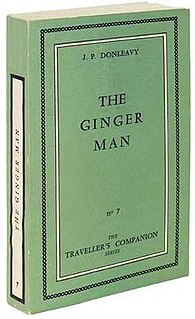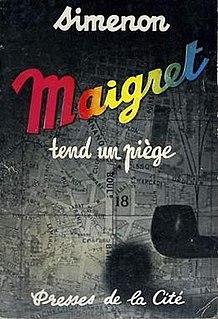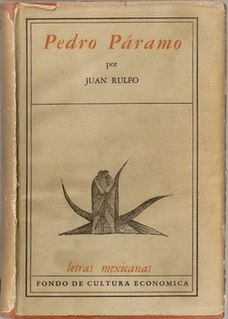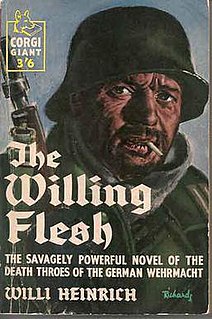 W
WAfter Dark, My Sweet is a 1955 American crime novel by Jim Thompson.
 W
WThe Book and the Sword is a wuxia novel by Jin Yong. It was first serialised between 8 February 1955 and 5 September 1956 in the Hong Kong newspaper The New Evening Post.
 W
WCount Luna is a 1955 mystery novel by the Austrian writer Alexander Lernet-Holenia. It is set during the Nazi era and deals with issues raised between the Anschluss and the extent of Austrian guilt.
 W
WEmma is a 1955 novel by F. W. Kenyon published by Thomas Y. Crowell Company.
 W
WThe Forbidden Forest is a 1955 novel by the Romanian writer Mircea Eliade. The story takes place between 1936 and 1948 in Bucharest and several other European cities, and follows a Romanian man who is on a spiritual quest while being torn between two women. The book was written between the years 1949 and 1954. It contains several elements and themes which also appear in the author's scholarly work, such as initiation rites and the division between sacred and profane time.
 W
WThe Ginger Man is a novel, first published in Paris in 1955, by J. P. Donleavy. The story is set in Dublin, Ireland, in post-war 1947. Upon its publication, it was banned both in Ireland and the United States of America by reason of obscenity.
 W
WHouse of Dolls is a 1953 novella by Ka-tzetnik 135633. The novella describes "Joy Divisions", which were groups of Jewish women in the concentration camps during World War II who were kept for the sexual pleasure of Nazi soldiers.
 W
WThe House of Fear is the first English translation of the Ibne Safi's much celebrated Urdu novel Khaufnaak Imaraat that was first published in 1955. It is published by Random House and translated by Bilal Tanweer. It also carries another novella Shootout at the Rocks. Both feature the stock character Imran, Ibne Safi, whose actual name was Asrar Narvi, wrote about 122 novels under this Imran Series. In the first story, the protagonist finds dead people in an empty house with three knife wounds each placed at exactly five inches. The hero who is considered an idiot by his secret-service colleagues solves the case in his own unique way between poetic recitations of Ghalib and praises of Indian film heroines. In the second story, a colonel called Zargham receives mysterious wooden animal-shaped toys, that we find later, are signature of Li Yu Ka, a two hundred years old brotherhood of deadly killers, and very soon the man is the thick of big trouble from which only the legendary Imran can be of any help.
 W
WJonas is a novel by Norwegian author Jens Bjørneboe, originally published in 1955 by Aschehoug. It is widely recognised as one of his most important works, and as one of the most significant Norwegian literary works of the post-war era. The novel has a complex narrative taken from several different environments from the 1920s Weimar Republic and the Nazi era to the 1950s Norwegian society.
 W
WKarlsson-on-the-Roof is a character who figures in a series of children's books by the Swedish author Astrid Lindgren. A cartoon adaptation of the series became popular in the Soviet Union when it was released in the 1970s. These adaptations are still celebrated as an integral part of the Russian cartoon industry. Karlsson, together with Cheburashka and other such characters, are recognized as a national icon. Lindgren may have borrowed the idea for the series from a similar story about Mr. O'Malley in the comic strip "Barnaby" (1942) by Crockett Johnson.
 W
WThe Magellanic Cloud is a 1955 science fiction novel by Polish writer Stanisław Lem. Fragments of the novel were published earlier, in 1953 and 1954, in the magazine Przekrój. Some significant literary tropes featured in the novel include interstellar travel, "first contact", psychological fiction, a Communist utopia, and criticism of the capitalist militarism, which Lem himself characterized as an "extract of the times of Socialist realism".
 W
WMaigret and the Headless Corpse is a detective novel by the Belgian writer Georges Simenon.
 W
WMaigret Sets a Trap is a 1955 detective novel by the Belgian novelist Georges Simenon featuring his fictional character Jules Maigret.
 W
WMemed, My Hawk is a 1955 novel by Yaşar Kemal. It was Kemal's debut novel and is the first novel in his İnce Memed tetralogy. The novel won the Varlık Prize for that year, and earned Kemal a national reputation. In 1961, the book was translated into English by Edouard Roditi, thus gaining Kemal his first exposure to English-speaking readers.
 W
WThe Mouse That Roared is a 1955 Cold War satirical novel by Irish American writer Leonard Wibberley, which launched a series of satirical books about an imaginary country in Europe called the Duchy of Grand Fenwick. Wibberley went beyond the merely comic, using the premise to make commentaries about modern politics and world situations, including the nuclear arms race, nuclear weapons in general, and the politics of the United States.
 W
WOnce a Greek is a 1955 novel by the Swiss writer Friedrich Dürrenmatt. Its original German title is Grieche sucht Griechin, which means "Greek man seeks Greek woman". It tells the story of a shy, middle-aged book-keeping assistant, who becomes popular and successful overnight when he decides to get married.
 W
WOrzowei is a 1955 novel by Italian writer Alberto Manzi. It is an anti-racist educational story set in Southern Africa. Adaptations of the novel include a movie and a popular TV series (1977).
 W
WPedro Páramo is a novel written by Juan Rulfo about a man named Juan Preciado who travels to his recently deceased mother's hometown, Comala, to find his father, only to come across a literal ghost town─populated, that is, by spectral figures. Initially, the novel was met with cold critical reception and sold only two thousand copies during the first four years; later, however, the book became highly acclaimed. Páramo was a key influence on Latin American writers such as Gabriel García Márquez. Pedro Páramo has been translated into more than 30 different languages and the English version has sold more than a million copies in the United States.
 W
WRagazzi di vita is a novel by Italian author, poet and intellectual Pier Paolo Pasolini. It was published in 1955.
 W
WRosaura at Ten O'Clock is a 1955 Argentine novel written by Marco Denevi. It was the author's first novel and was translated into several languages, as well adapted for theater, cinema and television. With this work, Denevi began a recognized literary career in the national and international arena. In 1964, it was translated into English as Rosa at Ten O'Clock.
 W
WSeason of the Sun is a Japanese novel written in 1955 by Shintaro Ishihara, who later became a politician and was governor of Tokyo for 13 years from 1999 to 2012. It is the source of the name of the rebellious taiyōzoku (太陽族) youth culture which emerged after World War II. The novel won the 1956 Akutagawa Prize.
 W
WSeryozha is a short novel by Soviet writer Vera Panova. Seryozha has also been translated as Time Walked and A Summer to Remember. Seryozha is a diminutive form of the name Sergey.
 W
WThe Ten Thousand Things is a novel by the writer Maria Dermout. The story is a rich tapestry of family life against the exotic, tropical background of the Molucca Islands of Indonesia. Although never explicitly stated, the main setting is probably Ambon Island. The story is structured along geographical themes with four major divisions: the Island itself, the Inner Bay, the Outer Bay, and again the Island. Dermout's omniscient narrator is attempting to make sense of the whole generational saga by carefully reflecting on the wonder of this world while revealing some of the horrible evils that the characters commit. After the publication of the English translation by Hans Koning, Time magazine listed it as one of the best books of 1958.
 W
WThe Willing Flesh is a novel by Willi Heinrich, chronicling the Eastern Front combat experiences of a depleted infantry platoon during the 1943 German retreat from the Taman Peninsula in the Caucasian coast of Russia.